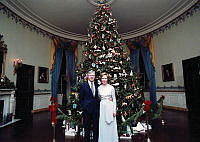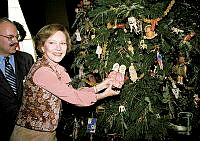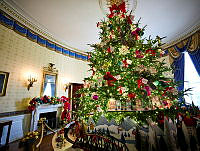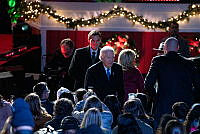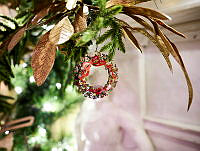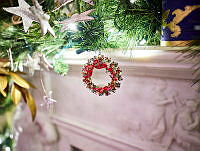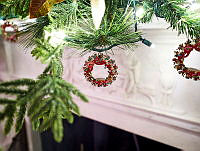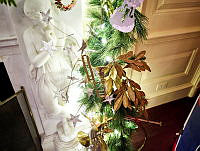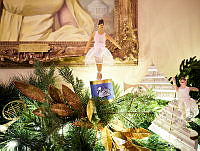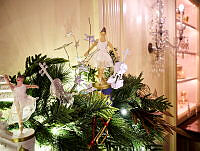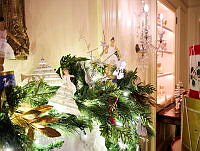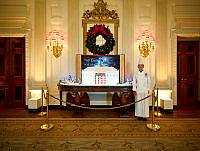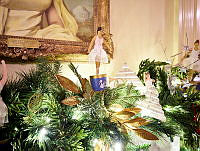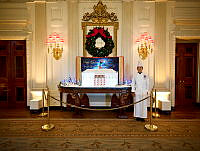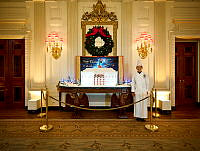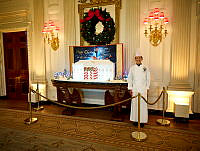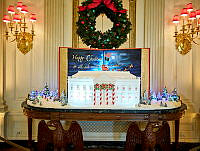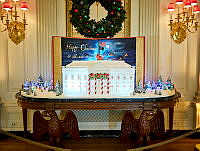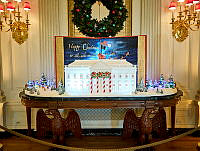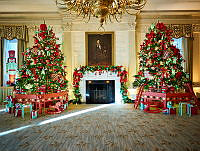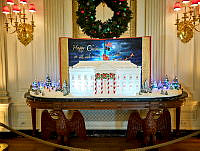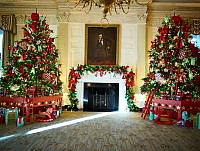Rubenstein Center Scholarship
Patricia Nixon's Visitor Friendly White House
Not long after she became First Lady, Pat Nixon was asked what she planned to focus on in her new role. Her response was simple: “People are my project.”1Mrs. Nixon did not want to be constrained by selecting one specific project. Instead, she wanted the latitude to pursue various projects that directly helped people.
As First Lady, Mrs. Nixon travelled extensively around the country, lending her support to and highlighting the work of countless numbers of volunteer groups and organizations. From traveling to some of America’s most disadvantaged urban areas in support of their work in their communities, to visiting college campuses in five states to encourage the activities of student volunteers, Pat Nixon worked tirelessly to support volunteerism. She brought that same energy to her desire to make the White House – the People’s House – more open to visitors than it had been in decades.
Mrs. Nixon began her efforts by literally making the mansion more accessible, a full 20 years before the Americans with Disabilities Act would mandate such accommodations in public buildings.

First Lady Patricia Nixon sits with Dorothy Anderson and Sean McCombs, who are visiting from Washington Hospital for Sick Children, in the Map Room on October 21, 1971. Mrs. Nixon had the first wheelchair ramps installed for the use of public visitors to the White House.
Richard Nixon Presidential Library and Museum/NARAWhen Mrs. Nixon became First Lady in January 1969, the White House was open for tours most weekdays and Saturday mornings to anyone who was willing to stand in line outside the entrance to the East Wing. But for some citizens, taking advantage of the tour opportunity was almost impossible. Steps inside the East Wing entrance made it difficult, if not impossible, for wheelchair bound visitors to tour the White House. So Mrs. Nixon had ramps installed, both in the East Wing where tours began and at the North Portico, where tourists exited the house. This made it possible for people using wheelchairs to join the tours. Mrs. Nixon also extended those efforts to others with physical needs.
As anyone who has taken the public tour of the White House knows, visitors are understandably instructed not to touch anything as they make their way through the Ground Floor Corridor and the State Floor. The mansion’s priceless antiques and costly fabrics would not last long if touched by the fingers of the many thousands of people who tour the White House each year. For people with limited or no vision, however, being able to touch objects is the only way they can really “see” those objects.
“People are my project.”
Mrs. Nixon arranged for special afternoon tours for groups of people with impaired vision. As Julie Nixon Eisenhower, who volunteered in the summer of 1969 as a White House guide, recalled in her biography of her mother, “Children and adults felt the scaled serpent legs of the wooden Empire sofa in the Red Room, enjoyed the smoothness of the silk tassels on the draperies in the Green Room, and touched the cool silver of the two-hundred-year-old coffee urn that had belonged to John and Abigail Adams.”2
Mrs. Nixon would later record the introduction for an audio guided tour that people who would attend the tours for the blind could to listen to in advance of their visit. In a brief message printed on the inside cover of the record, Mrs. Nixon wrote, “[T]hrough this recording we open the doors of the White House to each of you. We hope you will enjoy your tour today and will have the pleasure of a personal visit soon. The Welcome sign is always out for you and your friends.”3
Mrs. Nixon also established special tours for hearing impaired visitors. To enhance those visits, White House guides were trained to face these groups directly and to speak slowly enough to allow lip reading and for sign-language interpretation.

First Lady Patricia Nixon comforts a child blinded by Rubella while visiting the Michigan School for the Blind in Lansing, Michigan, on March 2, 1970.
Richard Nixon FoundationBecause the White House welcomes tourists who speak a wide variety of the world’s languages, Mrs. Nixon had the White House Visitors Office create brochures written in several of the most widely-spoken languages. The brochures explained the highlights of the different rooms on the tour, enhancing the visitor experience for non-English speaking tourists. And as Life magazine reported in its August 25, 1972 issue, Mrs. Nixon “has an eye for nuance. She pulled the White House tour guards out of their starchy uniforms and put them in navy blue blazers. ‘It softens the house,’ she explains.”4
Over the course of her five-and-a-half years as First Lady, Mrs. Nixon acquired more than 600 pieces of antique furniture, historic works of art, and other period-appropriate furnishings for the White House. Clement “Clem” Conger, who served as White House curator during the Nixon, Ford, Carter and Reagan administrations, would say of Mrs. Nixon, "She did more for the White House than any other First Lady, with the possible exception of Dolley Madison.”5
Among the treasures Mrs. Nixon and her team acquired was a portrait of Dolley Madison, who was not previously represented in the White House Collection, portraits of John Quincy and Louisa Catherine Adams, and numerous pieces of museum-quality furniture from America’s foremost 18th century furniture makers. As one author observed recently, “Much of the Nixon legacy of art, design, furniture, décor and general protocol lasts to this day in the White House.”6 But as hard as Mrs. Nixon worked to expand the White House historic collections, she had the most fun decorating the house for the holidays.

First Daughter Julie Nixon Eisenhower as a White House Guide, conducting a tour for sight impaired and partially blind children in July 1969. Here, the children stop and touch a bust of George Washington in the Cross Hall.
Richard Nixon Presidential Library and Museum/NARAMrs. Nixon had always loved trimming her family home for Christmas, and the White House was no exception. Over the holiday season, thousands of invited guests, including members of Congress, the diplomatic corps, the President’s cabinet, and White House staff and their families, would visit the mansion to see the festive transformation of the formal State floor into a holiday wonderland.
As much as she enjoyed the official entertaining during the holidays, Mrs. Nixon also wanted to share the beauty of the mansion at Christmas with as many people as possible. This included working people in the Washington area whose jobs would not allow them to tour the White House, and see it in all its holiday finery, during the day. So, on December 29 and 30, 1969, Mrs. Nixon opened the house in the evening for the first-ever public Christmas Candlelight Tour.
As she would recall for House and Garden magazine in December 1971, “Because we want[ed] to share the house with as many people as possible, we started a tradition of candlelight tours through the state rooms.”7 No special invitations were required. The tour was open to anyone willing to brave the winter cold while waiting to enter the mansion.
Once inside, the warmth of the season immediately dispelled any chill that remained from the wait outside. The State Rooms glowed from soft candlelight, as the electric lights were dimmed. Fires blazed in the Green, Blue, and Red Room fireplaces while bands of the Armed Forces played holiday tunes that echoed throughout the house. Visitors often became carolers, spontaneously accompanying the band by singing along to well-known yuletide carols and tunes.
The public Candlelight Tours were so popular that they continued to be held annually until 2001, when security concerns after the terror attacks of September 11 resulted in their cancellation.

Patricia Nixon began the annual White House Candlelight Tours during the holiday season, opening the Executive Mansion in the evenings to allow working families the chance to enjoy the holiday decorations. In this photograph, one group listens to the United States Marine Band in the Entrance Hall on December 27, 1973.
Richard Nixon Presidential Library and Museum/NARAAnother White House tradition initiated by Mrs. Nixon was able to survive even security concerns: the spring and fall White House Garden Tours. Not since the White House Grounds were closed in the days immediately following the bombing of Pearl Harbor on December 7, 1941, had the entire White House South Grounds been open to the public. That all changed on April 14 and 15, 1973, when the Nixons hosted the first annual White House Garden Tour.
On a sunny spring day, Mrs. Nixon, accompanied by the President, opened the first day of the Garden Tour by escorting a group of Washington, D.C. school children, along with their parents and teachers, through the gardens on the South Grounds of the mansion, including the historic Rose Garden. As the New York Times reported, “Mrs. Nixon led the group down the circular drive on the south lawn of the White House, pointing out historic trees.”8
As this tour progressed, some of the people waiting in line, including the Thompson family from Tennessee, were asked to join in. “They came up and pulled us out of line,” Mr. Thompson told a reporter. “Isn’t it wonderful?” Mrs. Thompson added.9
Over the two days of the tour, the grounds were open for a total of six hours. During that time, over 11,000 people made their way through the White House gates to enjoy the first Spring Garden Tour. Over the years, the Spring and Fall Garden Tours have become one of the most popular public events at the White House. The most recent Garden Tour, held in October 2018, saw the White House Grounds open for a total of 11 hours over two days and welcomed more than 25,000 people.

Patricia Nixon began the now-traditional White House Garden Tours; here, she and President Richard Nixon personally guide a group of visitors through the Rose Garden on April 14, 1973.
Richard Nixon Presidential Library and Museum/NARAOver the course of its history, every first lady has left their mark on the White House. Beginning in 1969, Pat Nixon brought to the White House a new commitment to making the People’s House as accessible as possible to as many people as possible. The results of Mrs. Nixon’s determination to make people her project, continue to be enjoyed by all those who visit the White House today.
Bob Bostock was the curator and author of the Nixon Library's Pat Nixon Centennial Exhibit in 2012, "Pat Nixon: People Were Her Project."














